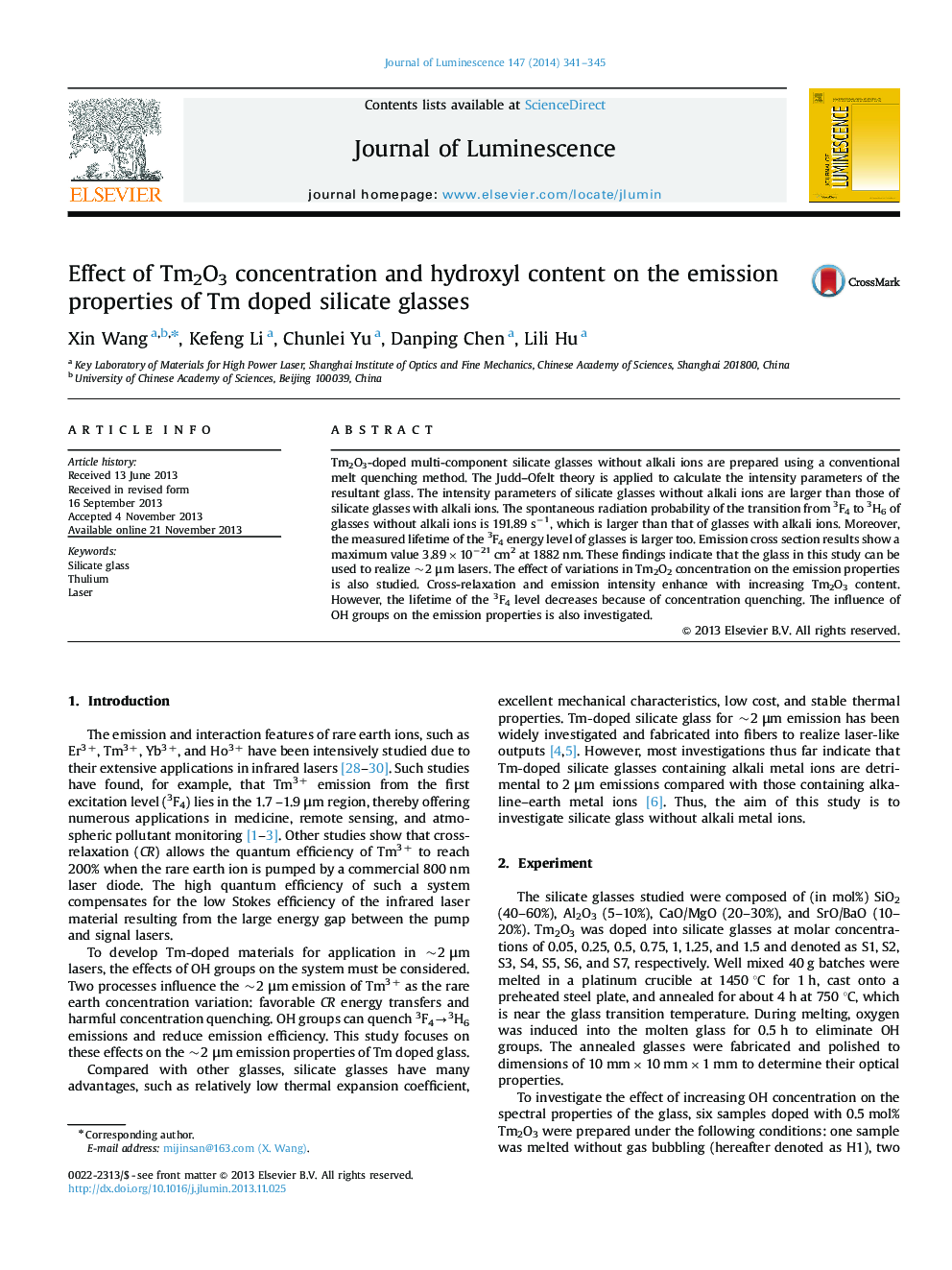| Article ID | Journal | Published Year | Pages | File Type |
|---|---|---|---|---|
| 5400071 | Journal of Luminescence | 2014 | 5 Pages |
Abstract
Tm2O3-doped multi-component silicate glasses without alkali ions are prepared using a conventional melt quenching method. The Judd-Ofelt theory is applied to calculate the intensity parameters of the resultant glass. The intensity parameters of silicate glasses without alkali ions are larger than those of silicate glasses with alkali ions. The spontaneous radiation probability of the transition from 3F4 to 3H6 of glasses without alkali ions is 191.89 sâ1, which is larger than that of glasses with alkali ions. Moreover, the measured lifetime of the 3F4 energy level of glasses is larger too. Emission cross section results show a maximum value 3.89Ã10â21 cm2 at 1882 nm. These findings indicate that the glass in this study can be used to realize ~2 μm lasers. The effect of variations in Tm2O2 concentration on the emission properties is also studied. Cross-relaxation and emission intensity enhance with increasing Tm2O3 content. However, the lifetime of the 3F4 level decreases because of concentration quenching. The influence of OH groups on the emission properties is also investigated.
Keywords
Related Topics
Physical Sciences and Engineering
Chemistry
Physical and Theoretical Chemistry
Authors
Xin Wang, Kefeng Li, Chunlei Yu, Danping Chen, Lili Hu,
